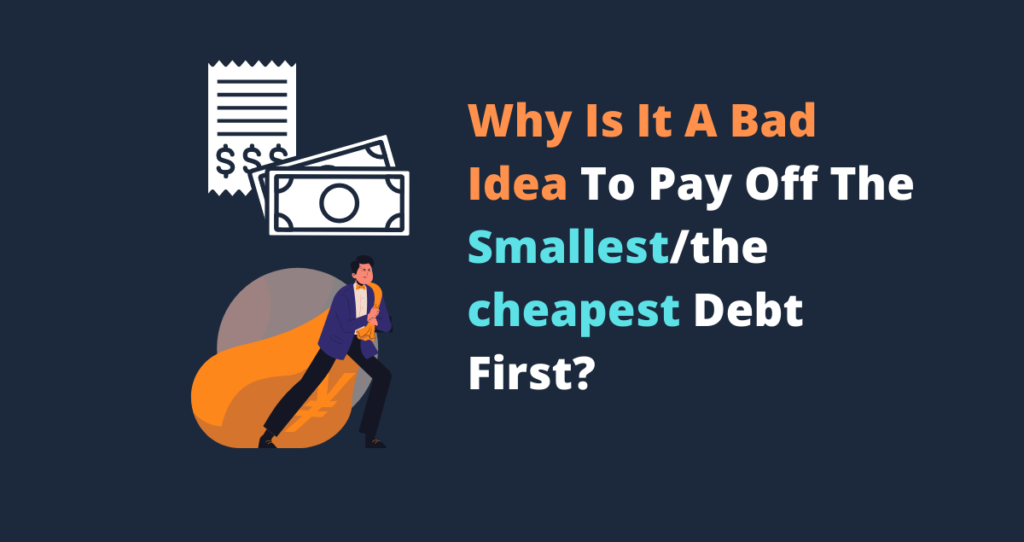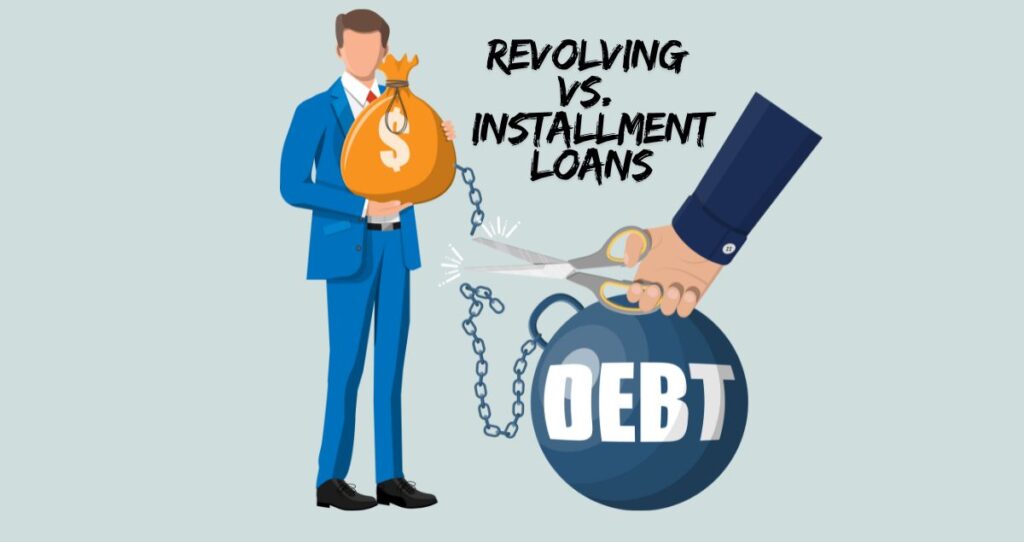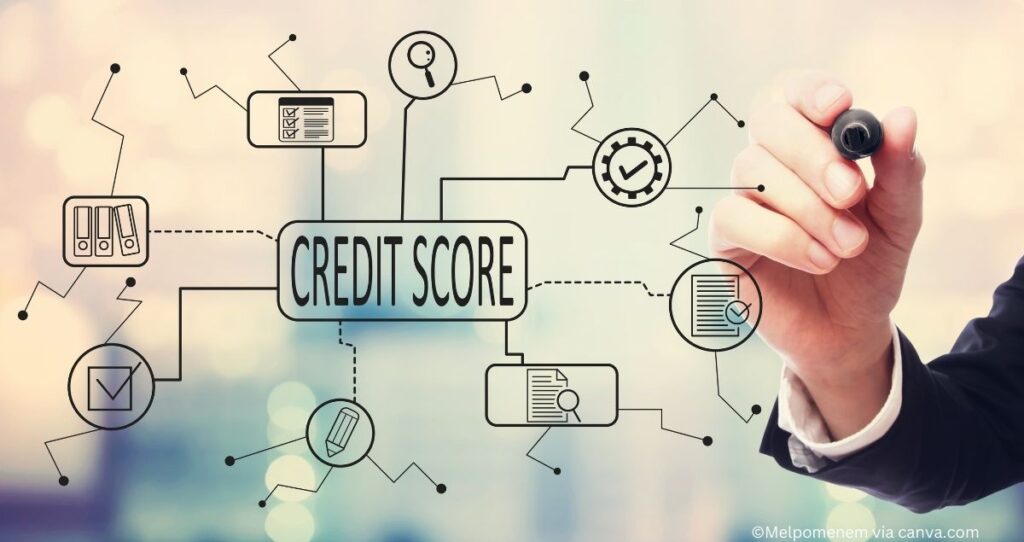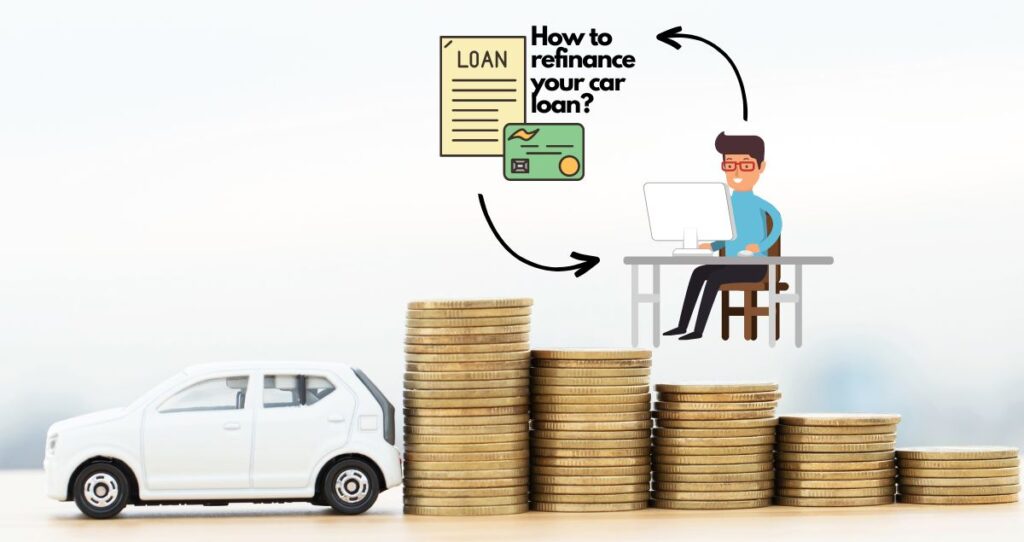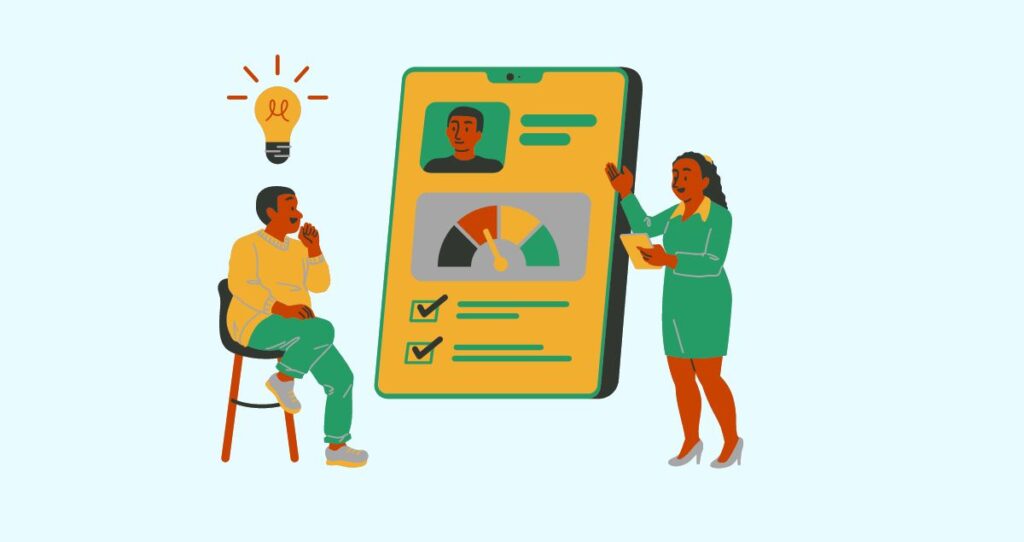A personal loan is a loan from a lender that can be used for any project, such as a home renovation, car purchase, wedding, paying off debt, etc. To get a personal loan, you must submit a loan application to your nearby bank, credit union, or online lending institutions such as online banks and loan companies.
Personal loans usually have higher interest rates than student loans, mortgages, and car loans but lower rates than credit card rates and payday loans. To qualify for a personal loan, you must have a good credit score, a lower DTI ratio, and proof of income.
Here is everything you need to know about personal loans and tips to qualify for loans.
How does a personal loan work?
Personal loans are loans from banks, credit unions, and online lending institutions. Typically, personal loans range between $1,000 to $100,000. But, most lenders allow a maximum of $50,000 in personal loans. You pay off a personal loan in monthly installments like mortgages and car loans. Interest rates on purchase loans are higher than regular loans such as mortgages or student loans, and they usually range between 6% and 35.95% in interest.
To qualify for a personal loan, you must have a good credit score, an acceptable DTI ratio, and proof of income. Additionally, you must complete a loan application, which requires personal information such as name, address, social security number, and loan purpose. You must also provide information about your employer and supporting documents such as recent paystubs or W-2s for proof of income.
After applying for a personal loan, the lender will review your application and approve you if you meet the lending requirements. Typically, the process of approving a loan takes between hours or days. After being approved for the loan, you will receive the money in your bank account and start making monthly payments.
How to get approved for a personal loan?
Getting approved for a personal loan is easy if you meet the basic requirements and follow the proper steps. Loan requirements differ from one lender to another. However, the following are common requirements for personal loans.
- Good credit score. One of the biggest factors lenders evaluate when deciding on your loan application is your creditworthiness. A good credit score is a great way to prove you are a responsible borrower. A 740 credit score improves your chances of getting approved for the loan. However, some lenders will approve your loan application for credit scores in the 600s. Remember that the lower your credit score gets, the higher the interest you will pay.
- Proof of income. The money you are borrowing must be paid back with interest. This is why having proof of income is a major requirement when you are applying for a personal loan. Acceptable forms of income include but are not limited to salaries, wages, interest, loyalty, rental income, etc.
- A low DTI ratio. The debt-to-income ratio, or DTI ratio for short, is the ratio of your monthly debt payment to your monthly gross income. A good DTI ratio is under 36%, but most lenders prefer a DTI ratio that is 28%. When applying for a personal loan, your lender must know if you have existing loans. If you have too much debt already, the lender will more likely deny your loan application.
You might also like:
- How to get a loan with no credit: Find the Best Starter Loans and Get the Lowest Interest Rates
- What is The Best Loan For Buying A House?
How much can you borrow with a personal loan?
Personal loans are usually smaller than mortgages and are used to finance your financial needs, including medical bills, debt consolidation, home renovations, and expensive medical bills. While these loans vary by lenders, most can approve you for $1,000 to $50,000. If you have an excellent credit score, a lower DTI ratio, and a good income, your lender might approve you for as much as $100,000 in personal loans. Being a regular bank customer can also help you qualify for more money at a lower interest rate.
Learn more: How much can I borrow with a personal loan?
What is the average interest rate on personal loans?
Personal loan interest rates vary depending on the lender and your credit score. Typically, the higher your credit score, the lower your interest rate. According to Bankrate, borrowers with excellent and good credit scores pay around 13.5% interest on their loans. Those with lower credit scores pay a much higher interest rate, which can be as high as 36%.
Types of personal loans
Personal loans come in many forms and sizes. Here are four types and how they differ.
- Secured personal loans. Secured personal loans require collateral in assets such as a home, car, boat, etc. The term”secured” means that your assets back the loan as collateral, and the lender will take the assets if you fail to pay off your loans.
- Unsecured personal loans. Just like the name suggests, unsecured personal loans do not require collateral.
- Specialized lenders. Companies usually offer these loans to their customers to support the products and services they purchase.
- Credit builder personal loans. Borrowers with thin credit files or bad credit usually do not qualify for regular personal loans. That is why they qualified for credit builder loans, which work differently than secured or unsecured personal loans. With a credit builder personal loan, you make regular monthly payments to a savings account for the duration of the loan. After making all necessary payments, the lender gives you the money. Think of this as paying off the loan before you receive the money. A credit build loan is designed to help you build credit rather than give you quick cash for your project.
How to get a personal loan?
To get a personal loan, you need to submit a loan application and wait for the lender to approve you for the money. You can either apply online or apply in person. It will all depend on the lender. Typically, online lenders require online loan applications, while some banks and credit unions require that you apply in person.
If you are ready to apply for a personal loan, follow these quick steps to qualify.
1. Check your credit report.
Lenders use your credit score to determine your creditworthiness. Having a good credit score increases your chances of getting a loan. A good credit score also helps you secure a lower interest rate on the loan. For this reason, check your credit report and ensure there are no errors or inaccuracies on your reports before applying for a personal loan. If you have a bad credit score, rebuild it before submitting your application.
Related posts:
2. Shop around for lower rates and get pre-qualified
Since there are many personal loan providers both online and in person, getting prequalified is a great way to qualify for a lower interest rate with favorable terms. The pre-qualification process involves asking different lenders to see if you qualify for the loan and how much money you can qualify for. If you are worried about hurting your credit score, prequalification does not cause a hard inquiry on your credit reports. Pre-qualification only results in a soft inquiry, not hurting your credit score.
3. Prepare the required documents.
When applying for a personal loan, you must provide certain documents as part of the loan process. These documents include your passport, green card, citizenship card, driver’s license, state-issued ID, etc. You will also need to provide proof of employment. Having your employer’s contact number, W2, or recent pay stubs will be great.
4. Submit your loan application.
After deciding on the best lender and putting together the necessary documents, you will then apply. The lender will then run a hard pull on your credit profile to check your credit score and evaluate your credit history. A hard inquiry lowers your average credit score by 5 to 6 points. Once approved for a personal loan, the lender will wire the money into your bank account, and your first monthly payment will be due within 30 days.
You might also like: Can I get a credit card without a job?
What to look for in a personal loan?
All personal loans are not created equal. Some loans have the highest interest rate, while others have unfavorable terms.
Here are things to watch out for to get the best terms when applying for a personal loan.
Interest rate
The most important thing to look for when applying for a personal loan is the interest rate you pay. The interest rate is simply the cost of borrowing the principal. The higher the interest rate you pay, the more expensive the loan becomes. Typically, you need to aim for a below-average interest rate.
According to Bankrate, the following are average interest rates on personal loans based on credit scores. If your credit score is between 720 and 850, the average interest rate is between 10.73% and 12.50%; for credit scores between 690 and 719, the average interest rate is 13.50% to 15.50%. If your credit score is between 630 and 689, the average personal loan rate becomes 17.80% to 19.90%. For those with credit scores between 300 and 629, the average interest rate becomes 28.50% to 32.00%.
When applying for a personal loan, find a lender with an interest rate lower than the average, depending on your credit score.
Your monthly payments
Your monthly payment is a payment you need to make every month for the entire term of your loan. Before signing up for the loan, make sure that the monthly payment aligns with your financial situation and will not stress your budget.
You might also like ten effective ways to manage financial stress
Fees
If you are not careful, personal loan fees can make your loan expensive. Common personal loan fees include closing fees. Your lender might include this fee in your APR, but this option will increase your monthly payment. You might also have the option to pay it off upfront.
Funding time
f you need the money quickly, you must search for a lender with a fast application and funding process.
Support
While any lender can give you a personal loan, not every lender can satisfy your needs or support you when needed. You also need a lender with good customer reviews in case you need answers with your loan.
When does it make sense to get a personal loan?
While it might be tempting to take out a personal loan, you probably don’t need to get one until it is necessary. Personal loans come with higher interest rates than conventional loans, which makes them harder to pay off. For this reason, taking out a personal loan makes sense if you have an expensive emergency, such as a medical bill or home renovation, or when you want to consolidate your debts.
Alternatives to a personal loan
Getting a personal loan is not the only way to access cash. There are alternative ways to borrow money that might be more cost-effective.
Here are different ways to borrow money without taking out personal loans.
Home equity line of credit(HELOC)
Similarly to credit cards, HELOCs allow you to borrow the amount you need when you need it based on the equity you have in your property. You just borrow money and pay it off like you would do with a credit card. HELOCs come with lower rates compared to personal loans. If you need cash continuously such as making a regular expensive payment, getting a HELOC will make more sense than a personal loan.
Related post: How do you get equity out of your home?
Get a 0% APR credit card.
If you don’t need a large balance in personal loans, getting a 0% APR credit card will be an effective way to finance your project. Credit cards are a form of revolving credit, and each credit card comes with a credit limit, which you can use and pay off over time. 0% APR credit cards mean that you don’t pay interest on your balance until after the end of the promotional period, which is usually 6 to 12 months for many credit card issuers. One thing to watch out for is that using all your credit limits can increase your credit utilization ratio, which, in turn, might lower your credit score.
Related posts:
- How to apply for a credit card and get approved?
- What factors do credit card issuers consider when they apply?
Cash-out refinance
Refinancing refers to getting a different loan, usually with a lower interest rate and better terms. A cash-out refinance is a type of refinance where you borrow more money than you currently owe on the property and pocket the difference between the two. It is a way to tap into the equity in your home. After getting money out of your home, you can use it to finance projects such as home remodeling or pay off expensive medical bills.
Get a home equity loan.
Another way to access cash without taking out a personal loan is to get a home equity loan. A home equity loan is a loan you take against the equity in your home. Home equity loans are usually considered second mortgages, and your house’s equity is used as collateral. The amount you can borrow usually depends on your home’s current market value and the remaining loan balance. Most lenders allow you to borrow up to 80% of the equity in your house.
Wrong reasons to get a personal loan
While every person has their reasons for getting a personal loan, there are times when taking out a personal loan is a big financial mistake. The worst reasons to take out a personal loan include financing a wedding, a vacation, or a party. While you might need money to have a wedding of your dreams, if you have to borrow money to have a wedding, you probably don’t need to have that wedding. You can either wait or have a much cheaper wedding. The same applies to vacations and parties. It does not make financial sense to pay 20%+ APR to have a party or finance a vacation.
More loan tips
How can you request a lower interest rate on a credit card?
What is an unsecured credit card?
How does a foreclosure affect your credit?
What debt should you pay off first to raise your credit score?

